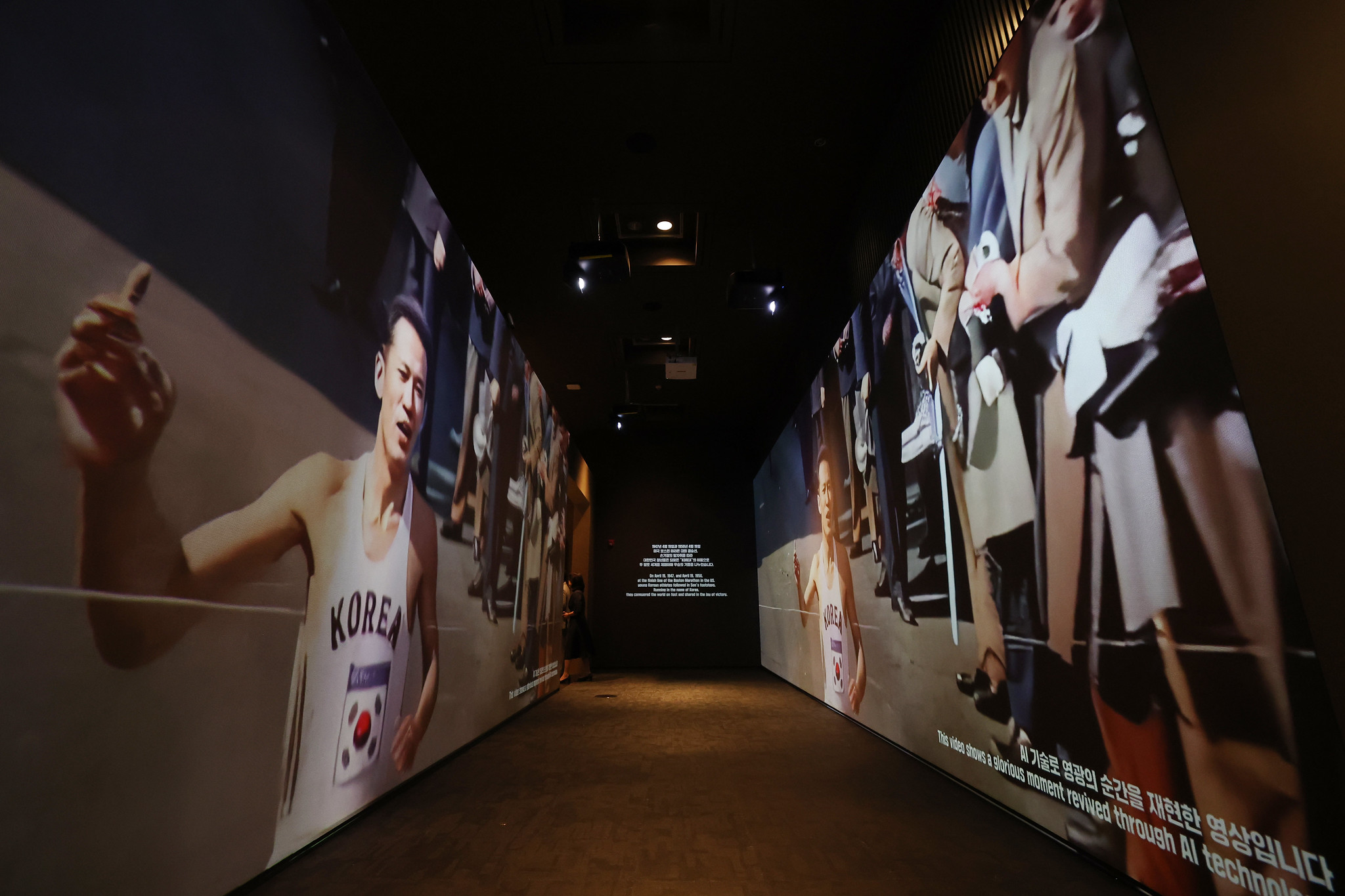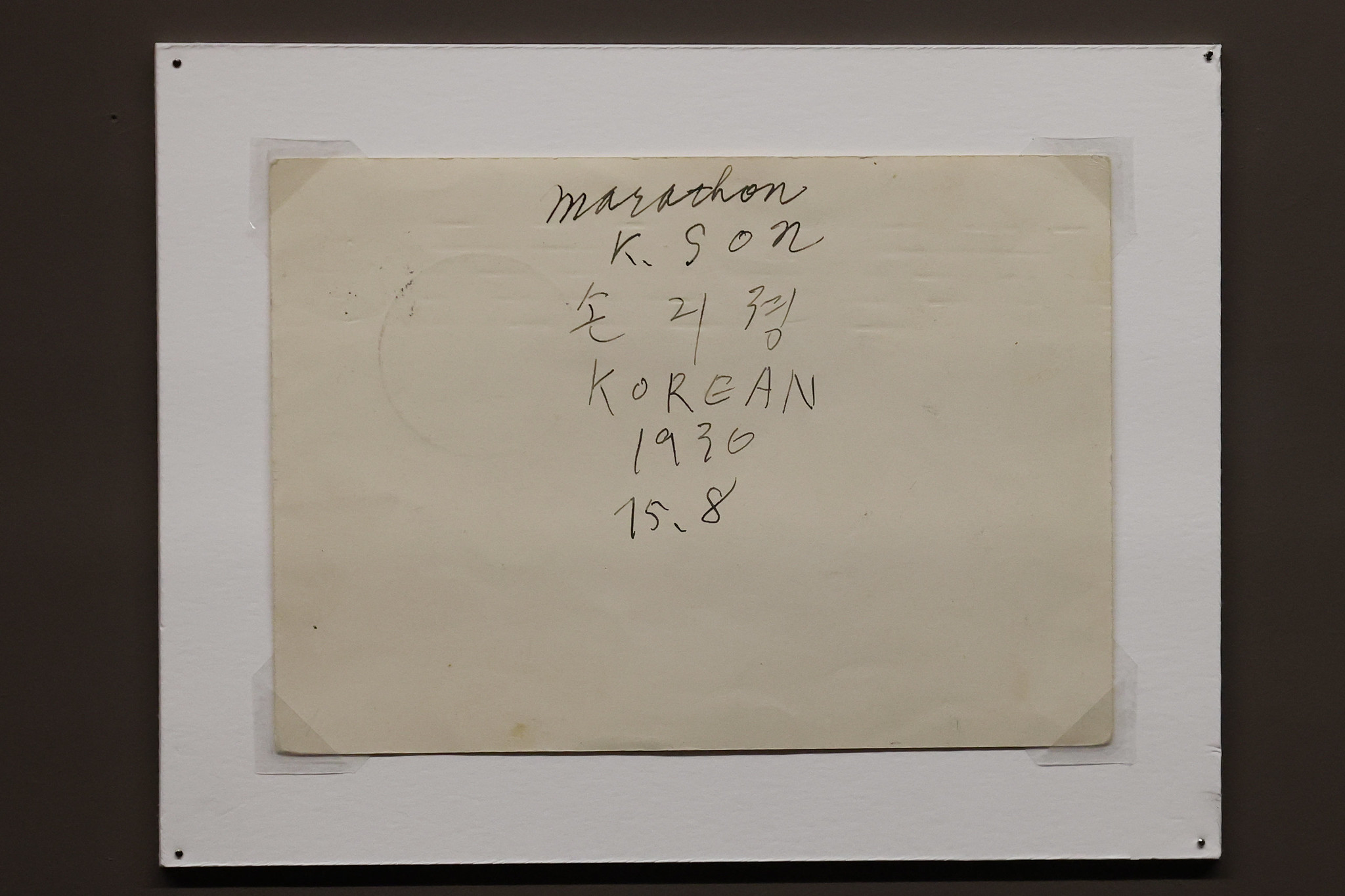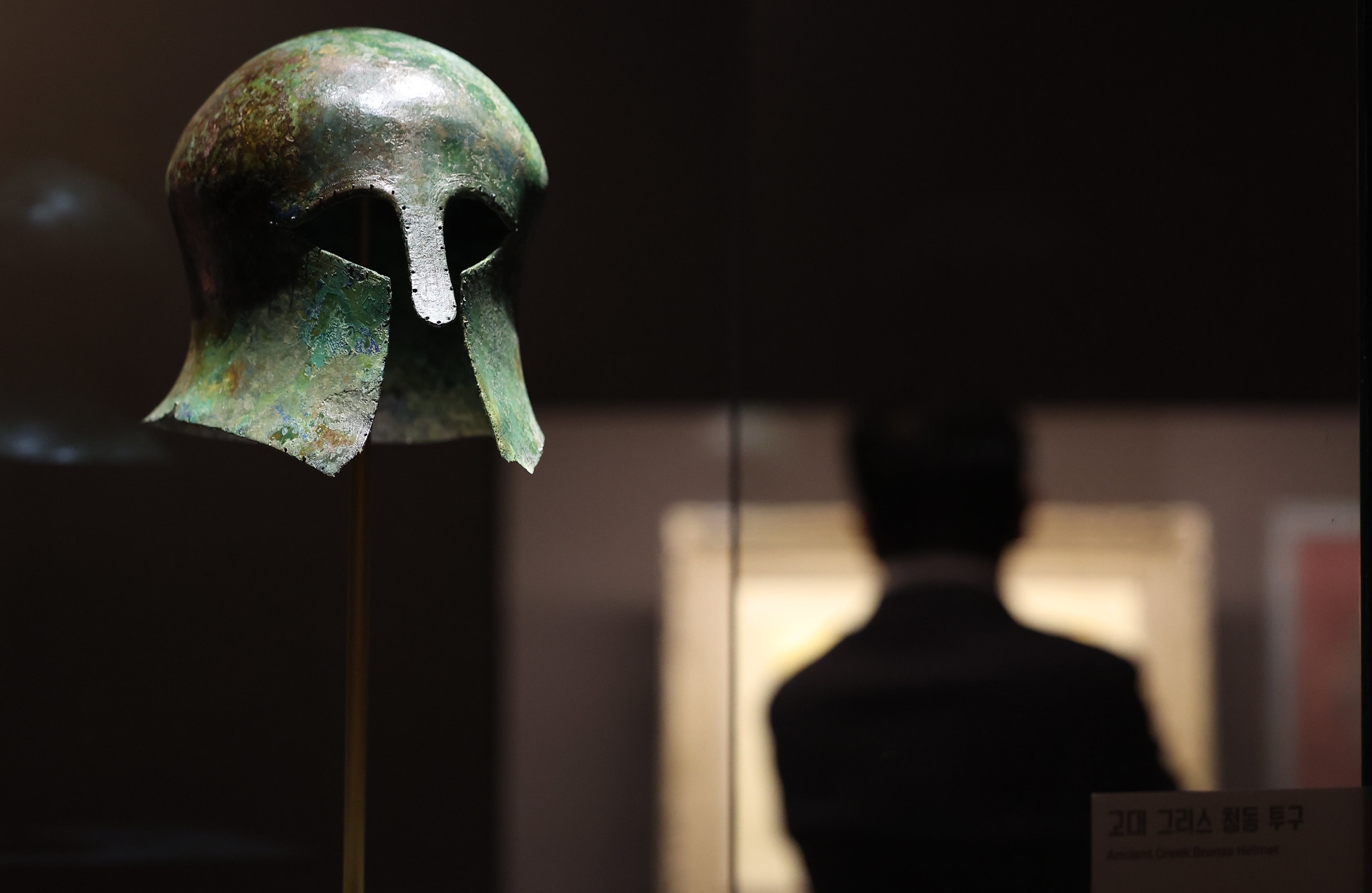
To commemorate the 80th anniversary of liberation from Japan, the National Museum of Korea on July 25 launched the exhibition "The Radiant Strides, Moving the World" spotlighting Son Kee Chung, the gold medal-winning marathoner at the 1936 Berlin Summer Olympics. Shown is a video using artificial intelligence of Son's journey at Donated Collection 1 at the museum's permanent exhibition hall on the second floor.
By Charles Audouin
Photos = Lee Jeongwoo
"While I was greeted by countless well-wishers, my main concern was how to make them aware that I am Korean, not Japanese."
To mark the 80th anniversary of liberation from Japan, the National Museum of Korea on July 25 launched the exhibition "The Radiant Strides, Moving the World" featuring Son Kee Chung (1912-2002), who won the gold medal in the marathon at the 1936 Berlin Summer Olympics. He was forced to compete wearing the Japanese flag on his uniform, but embraced his motherland on the podium.
When Son crossed the finish line first on Aug. 9, 1936, he was "Japanese runner Son Kitae." Even at that moment, however, he wanted to show the world that he was Korean, not Japanese.
On the podium, he was in anything but a celebratory mood, keeping his head down while covering the Japanese flag with his laurel wreath.
After liberation in 1945, Son returned to running. As a coach, he led the next generation of runners Suh Yun-bok and Ham Ki-yong to proudly promote the name "Korea." Suh won the Boston Marathon in 1947 and Ham in 1950.
Son also carried the torch at the 1988 Seoul Summer Olympics.
The exhibition's name refers to a calligraphic message from Kim Gu (Koo), head of the Korean Provisional Government, to congratulate Suh on his 1947 win at the Boston Marathon. The four characters formed a phrase meaning "conquering the world with feet," representing an immense sense of pride and hope for Koreans as well as a major athletic achievement.

This autograph by Son Kee Chung signed on Aug. 15, 1936, makes its public debut at the exhibition "The Radiant Strides, Moving the Word" at the National Museum of Korea.
The exhibition showcases 18 artifacts related to the champion runner.
Among them is an autographed postcard from Son that has never been seen before by the public. Right after winning the gold in Berlin on Aug. 15, 1936, he wrote "Korean Son Kee Chung."
To let the world know that he was Korean, not Japanese, he wrote his name in the Korean alphabet Hangeul whenever signing autographs.
The museum said, "This crucial evidence reflects Son Kee Chung's strong intent to show the world his Korean identity."

This ancient Greek bronze helmet from the sixth century B.C. is what Son Kee Chung received for winning the marathon at the 1936 Berlin Summer Olympics.
Also displayed is the ancient Greek bronze helmet Son received as the winner of the 1936 Olympic marathon. He later donated it to the museum in 1994, saying, "This belongs not only to me but also our people."
Another highlight is the article in the major Seoul daily Dong-A Ilbo on his victory featuring a famous photo that deleted the Japanese flag on his uniform. Also displayed at the exhibition are Son's gold medal, laurel wreath and certificate of victory.
The museum's director-general You Hong June said, "The exhibition doesn't have many artifacts but is meaningful in focusing on the joy that athlete Son Kee Chung gave to countless people."
The event runs through Dec. 28.
caudouin@korea.kr